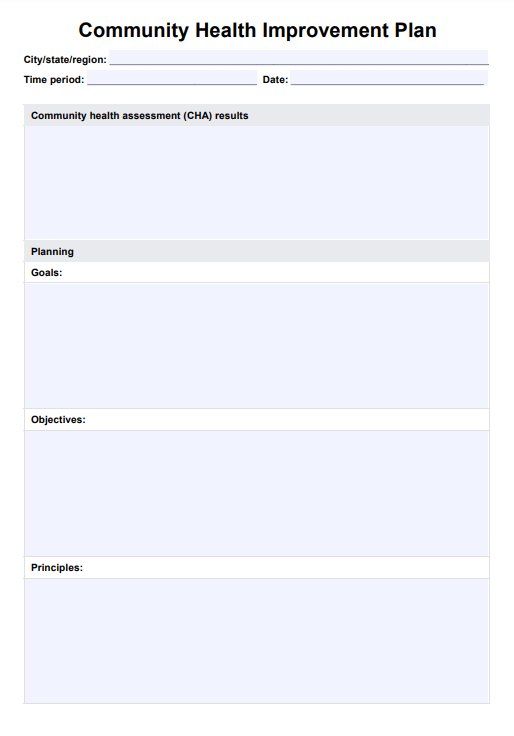A Community Health Improvement Plan (CHIP) is essential because it provides a strategic roadmap for addressing community health improvement needs and guides resources and efforts to improve community health outcomes effectively.

Community Health Improvement Plan
Use our Community Health Improvement Plans (CHIPs) template to address community health needs strategically.
Community Health Improvement Plan Template
Commonly asked questions
Improving the community's health involves implementing evidence-based interventions targeting priority health issues, promoting healthy behaviors, ensuring access to healthcare services, and addressing social determinants of health.
CHIP (Community Health Improvement Plan) outlines strategies and actions to address community and health improvement needs identified through a CHA (Community Health Assessment). The CHA assesses the community's current health status, needs, and resources, while the CHIP focuses on implementing interventions to improve health outcomes.
EHR and practice management software
Get started for free
*No credit card required
Free
$0/usd
Unlimited clients
Telehealth
1GB of storage
Client portal text
Automated billing and online payments











